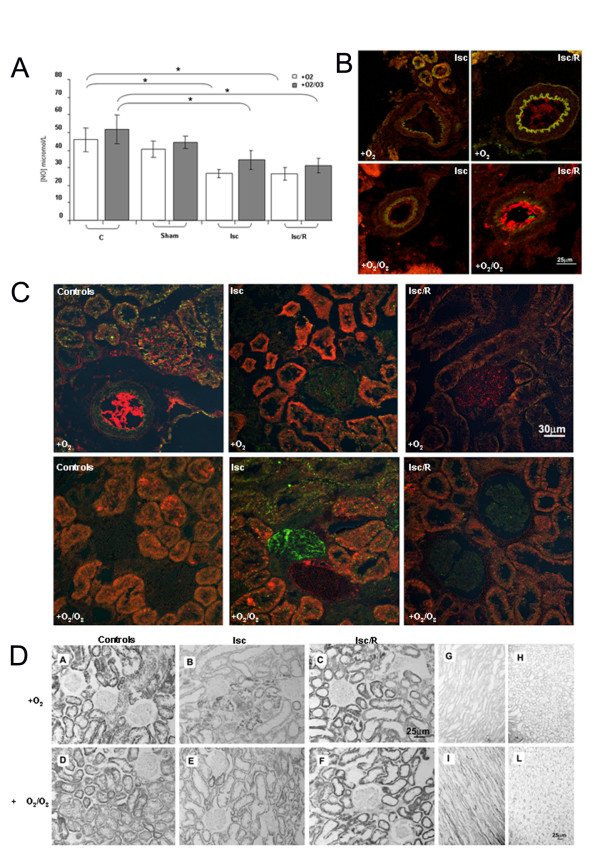Figure 3.
Effect of O2/O3 therapy on plasmatic nitrite/nitrate and renal iNOS activity. In panel A are reported plasmatic nitrite/nitrate levels; the mean values/group of animals obtained by Greiss colorimetric assay are expressed in micromoles/L. Rats subjected to Isc or Isc/R that received or not O2/O3 autohemotherapy showed reduced levels of NO as compared with corresponding controls C. Abbreviations: Sham = sham-operated rats. Isc = ischemia; Isc/R = ischemia/reperfusion. *p < 0.05. Panels B, C show iNOS (green) and CD31 (red) expression by confocal microscopy on representative sections from renal cortex of rats treated with OA (+O2/O3) or not. Renal arterioles (panel B) display no iNOS. CD31 is bright comparably to control (cfr.with panel C, upper left) on the arteriolar endothelial lining of Isc/R +O2/O3 rats only. Glomeruli display an increased iNOS in Isc animals, brighter in rats +O2/O3 than in the others. Very faint iNOS is focally observed in sections from the untreated controls and in Isc/R +O2/O3. In panel D the renal βNADPH diaphorase oxidative activity is shown as blue formazan signal on kidney sections. No difference in the renal cortex signal was seen between presence or absence of OA, but Isc animals display an inhomogeneous loss, whereas Isc/R an increase of the tubular signal respect to controls. Conversely medullary tubular cells of Isc and Isc/R rats submitted to OA show an higher βNADPH diaphorase signal than all the others.

